The Soliloquy Series by textile artist Meghan Spielman is an ode to all the monologues that run through our mind while performing daily chores or indulging in the creation of artworks that require excruciatingly long hours to complete. “The Soliloquy series is an expression of internal conversations that I have with myself during the hand-weaving process,” says Spielman, who specialises in both dobby weaving and jacquard weaving. Dotted with uncharacteristic weaves and patterns on a largely uniformly woven surface, the Soliloquy Series comprises five pieces, all of which can occupy artistic exhibition spaces as well as minimalistic interior spaces with a dominant air.
These bespoke woven items that can function as both tapestries and rugs carry within them Spielman’s stories. They reflect a traditional reference while also ascribing to contemporary aesthetics. Artistic creations that do not have any specific functional roles generally offer the opportunity to manipulate their designs during the process of making them. Spielman does the same with her Soliloquy Series. She initially plans out her pieces vaguely and leaves room for specific interventions and additions that can be made during the process of weaving these pieces. This leaves ample room for deviation from a straightforward path and manifests in the form of wefts, lines and dots that break the monotony of these pieces.
Spielman’s final pieces are a result of the immediate ideas and thoughts that come to her mind while weaving them. Unlike a painting, she cannot alter her final pieces without unravelling the entire piece, leading thus to the process of making all the decisions about the piece while weaving them. “As the piece slowly builds there is plenty of time to contemplate, and I find myself asking, should I indulge in what excites me, or rein myself in?” ponders Spielman. The five distinct Soliloquy pieces are a physical manifestation of these elaborate plans and sporadic decisions that Spielman makes while weaving out her pieces. They carry, thus, exaggerated tones of colours and undisciplined patches of textures upon their uniform surfaces.
In addition to the contrasting colours and textures that the weave employs, the usage of materials like synthetic nylon cords and glass seed beads, embedded between silk boucle and mohair yarns, induce curiosity with their presence while also inciting nostalgia due to their association with ‘art and craft’ activities from our childhood. Altogether, the contrast and tension between the materials and colours lends dynamism and playfulness to all the different pieces
Based in Bozeman, Montana, United States, Meghan Spielman creates textile design pieces out of several specialty yarns like cotton tape yarn, recycled sari silk, nylon cord, silk chenille, silk boucle, mohair, and strands of glass seed beads that the artist has collected over the years. Trained in creating traditional weaves, Spielman constantly experiments with different looms to produce pieces that transcend the boundaries of traditional loom weaving, while also pricking the viewer’s curiosity and pushing them to think and reflect on their relationship with textiles.






 Sign in with email
Sign in with email


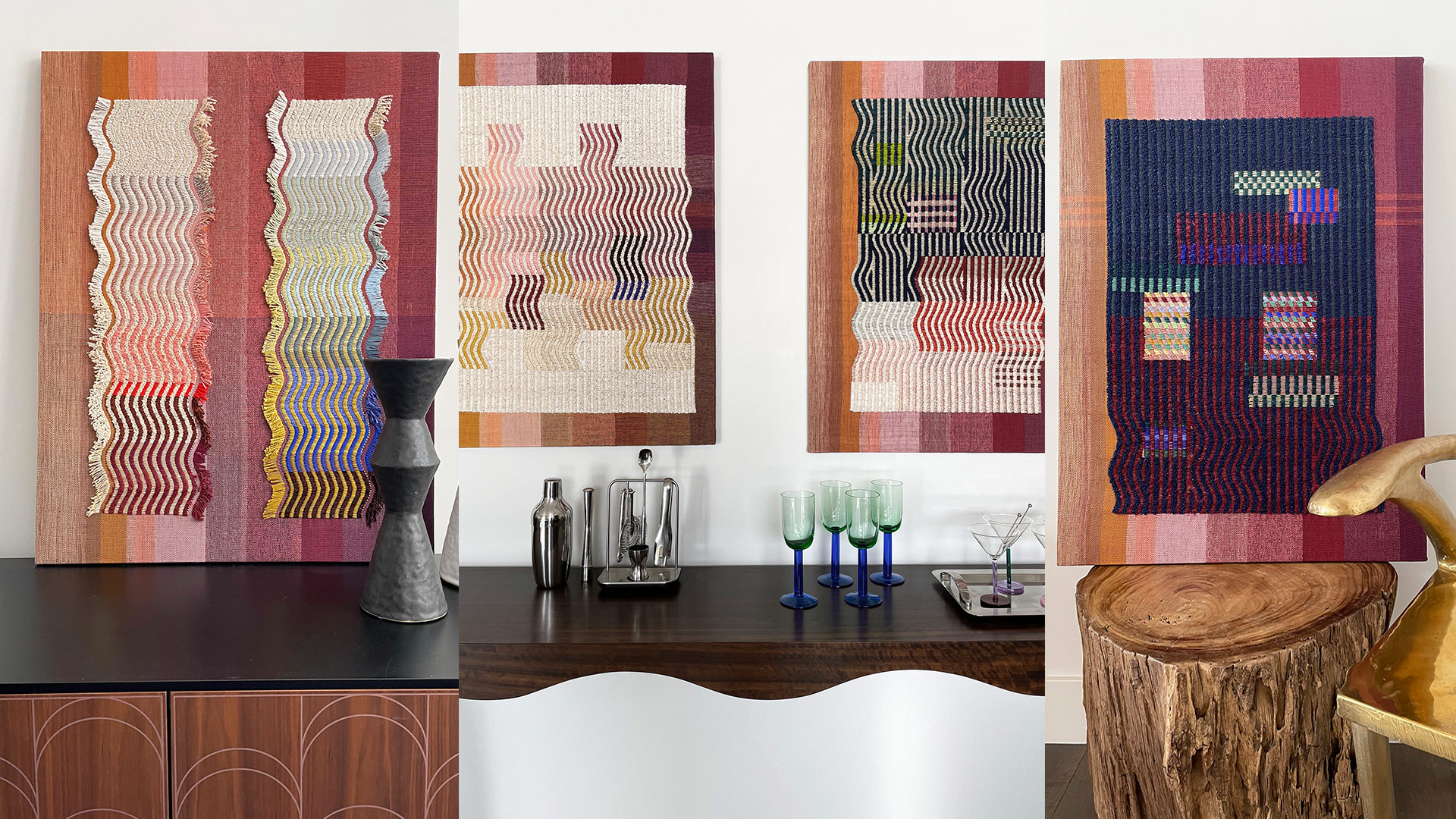
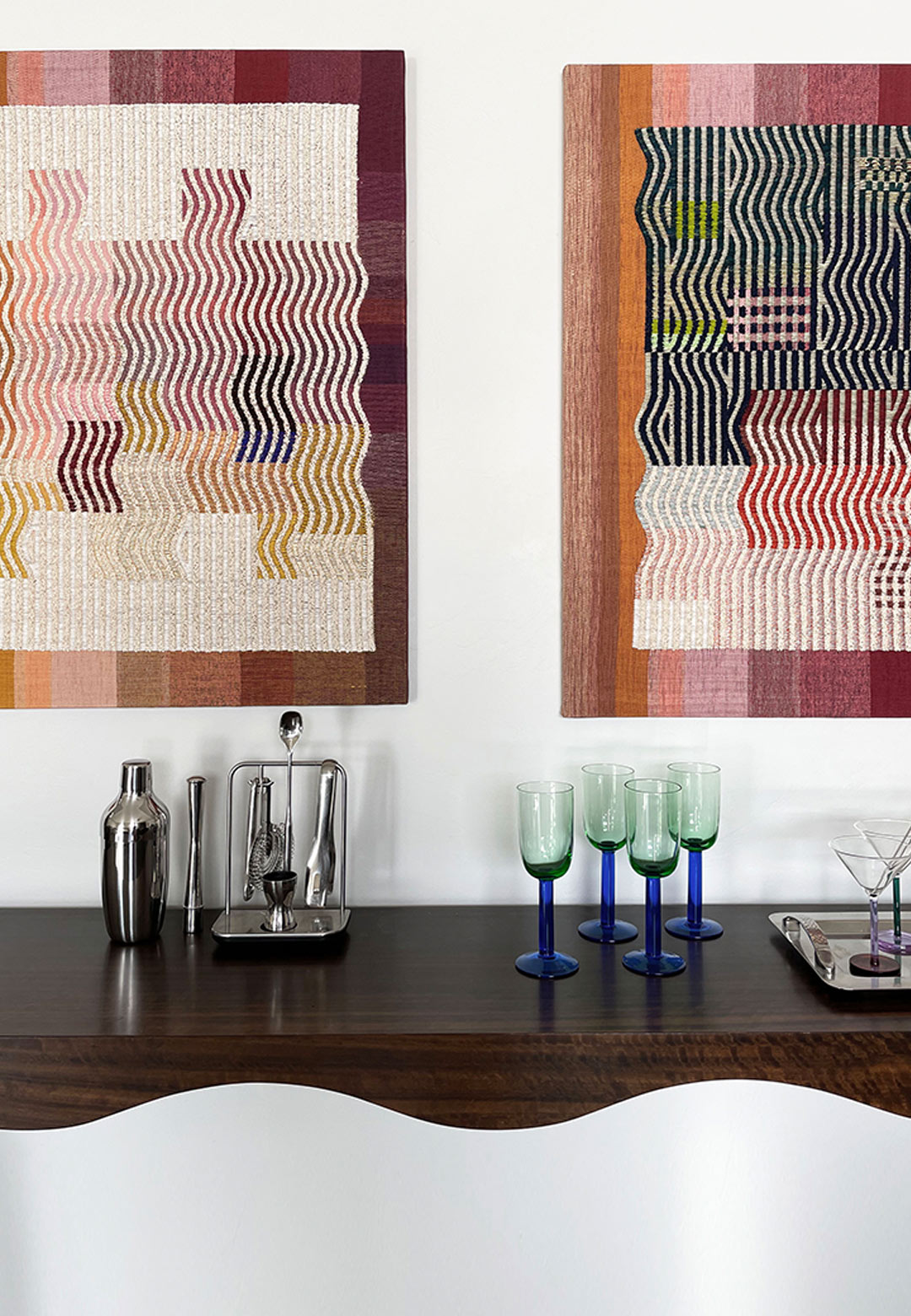
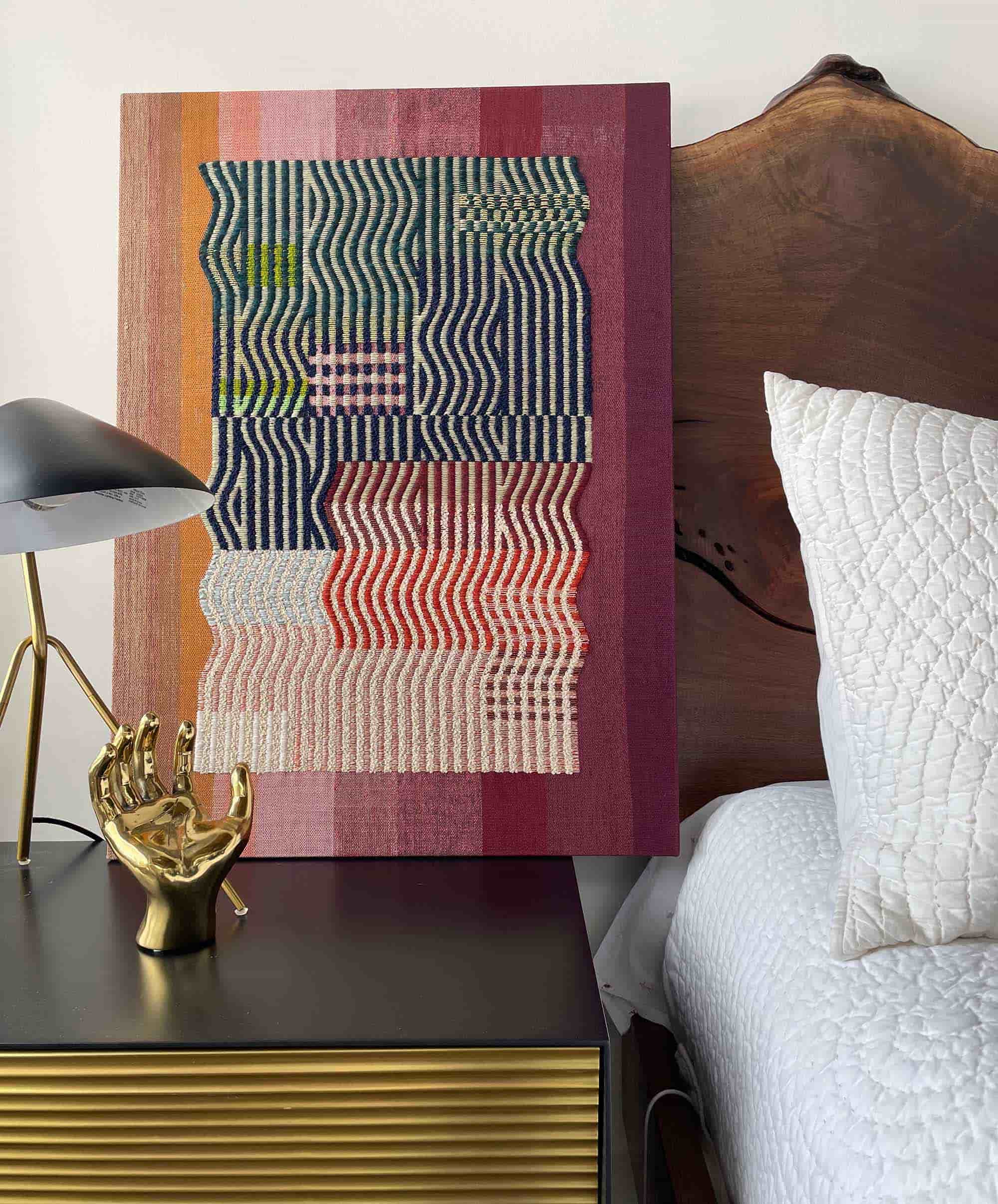
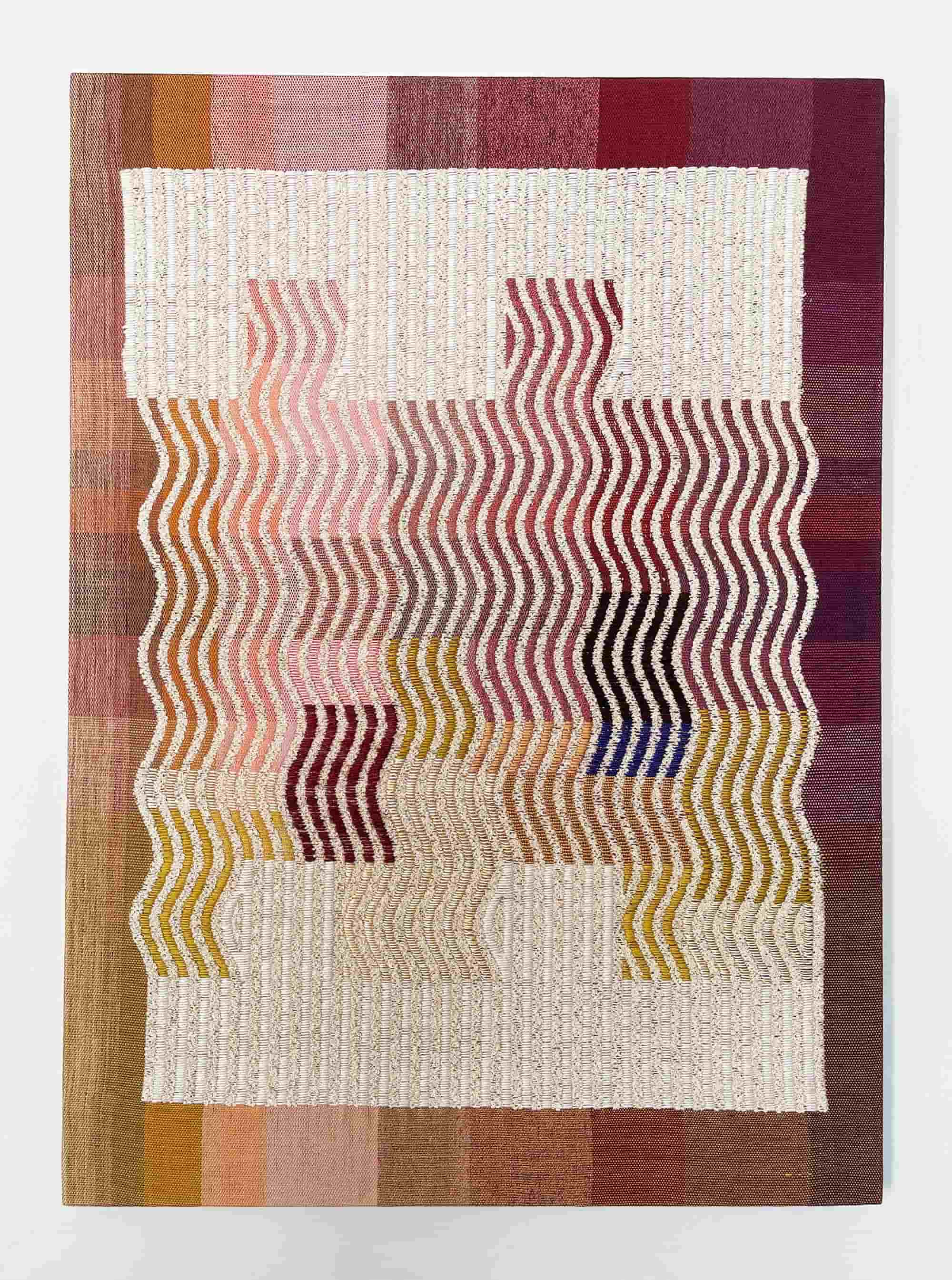
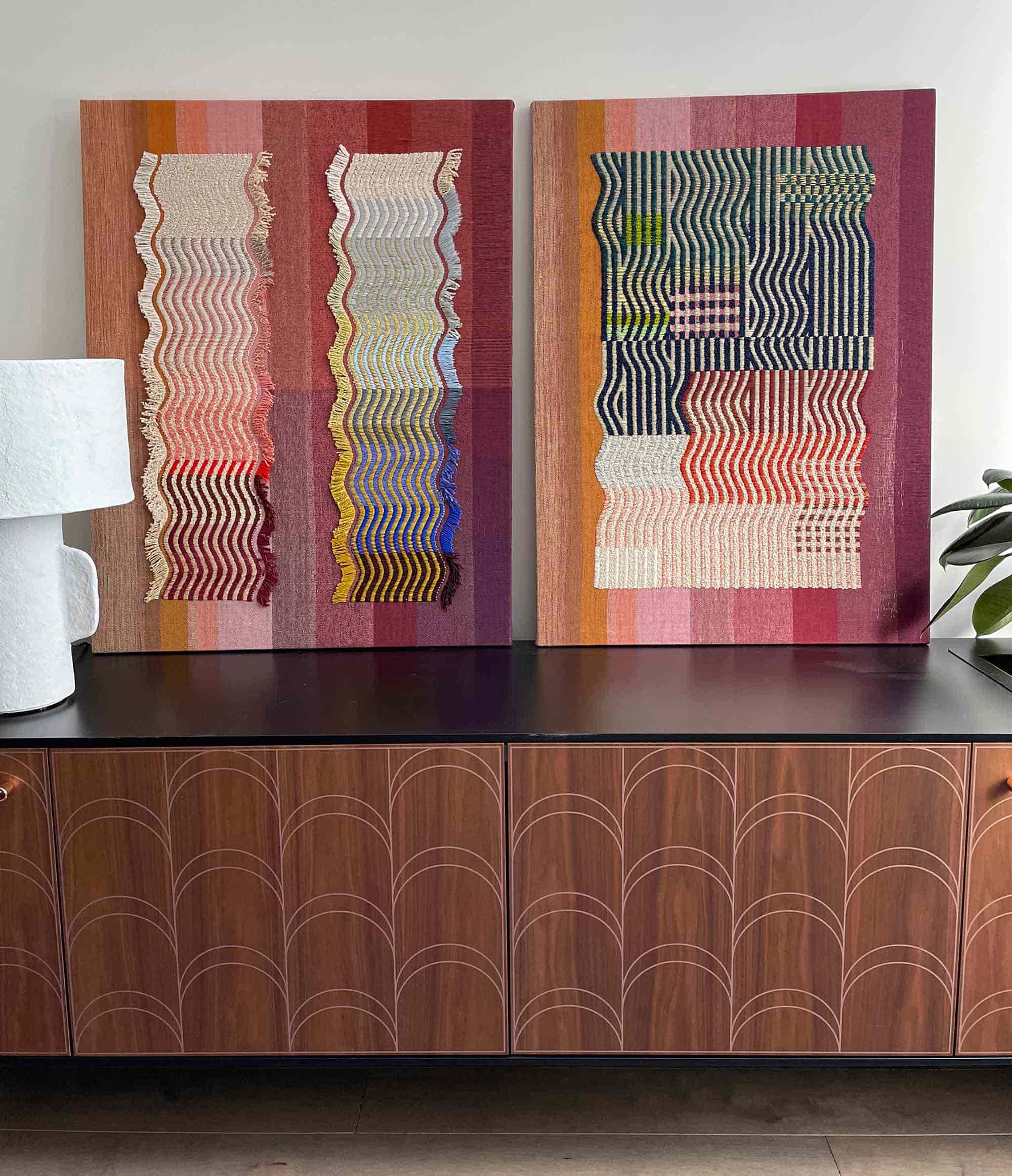
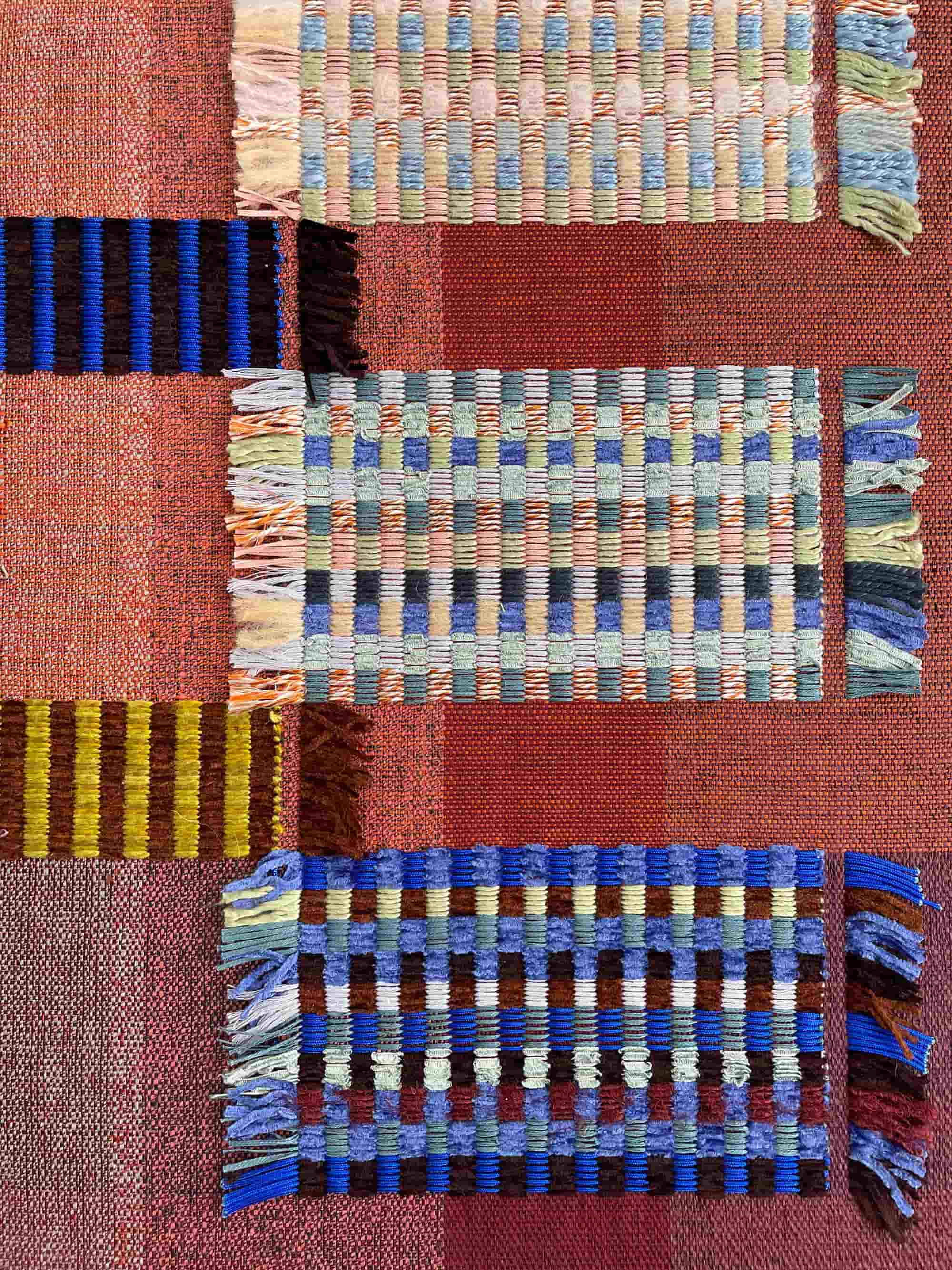






What do you think?